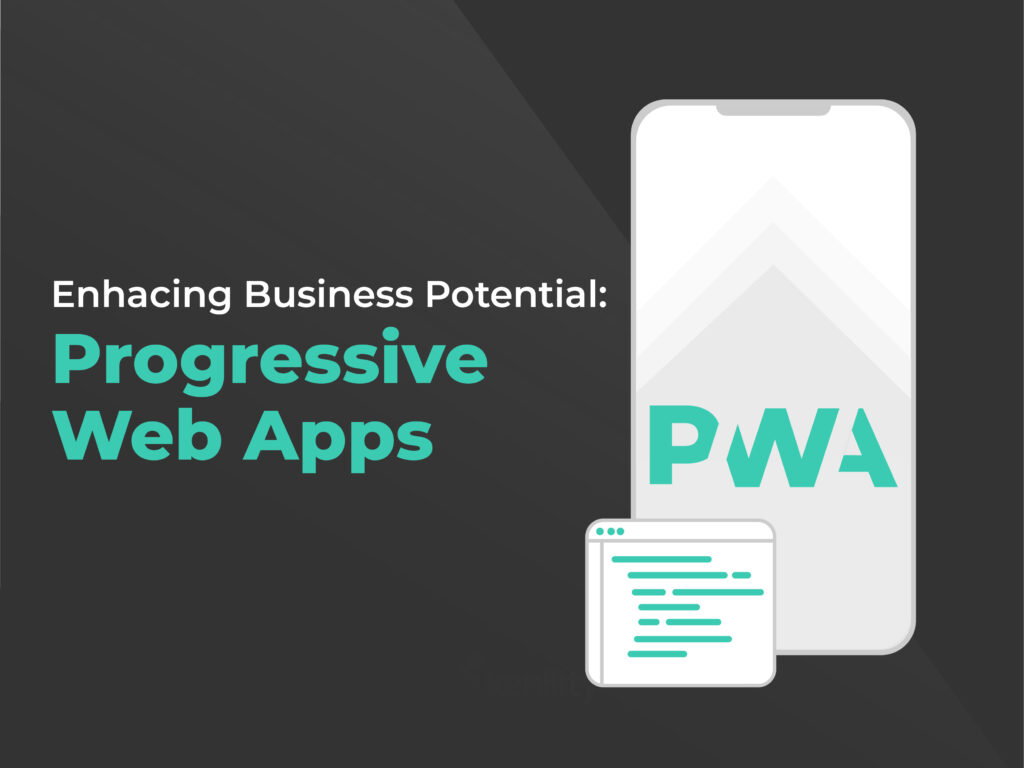The world of technology is evolving rapidly, changing the way people access online content. Progressive Web Apps (PWAs) have emerged as a powerful tool for businesses to enhance their online visibility and improve user experience.
Understanding Progressive Web Apps (PWAs)
PWAs are web applications that combine the best features of native mobile apps and traditional websites. They are designed to be fast, reliable, and engaging, accessible through any modern web browser on any device.
Defining PWAs
PWAs are web applications that use modern web technologies to deliver a native app-like experience. Built with HTML, CSS, and JavaScript, PWAs can be accessed through a URL, just like a traditional website. However, PWAs offer advantages like offline functionality, push notifications, and access to device features.
One key benefit of PWAs is their responsive design, working seamlessly on any device, regardless of the operating system or screen size. Users can access the app from their desktop computer, laptop, tablet, or smartphone without losing functionality or user experience.
PWAs also work offline, allowing users to continue using the app without an internet connection. Service workers enable caching of data and content, serving them to users even offline.
Push notifications are another significant feature of PWAs. These notifications can be sent to users even when the app is not active, keeping them informed about new content, messages, or updates. This boosts user engagement and encourages frequent app usage.
PWAs also provide access to device features like the camera and microphone, enhancing the user experience. For instance, a social media PWA can allow users to take and upload photos directly within the app, eliminating the need for a separate camera app.
Key Features of PWAs
PWAs offer compelling features that make them a viable alternative to native mobile apps, including:
- Fast loading times, even on slower internet connections.
- Offline functionality, allowing users to continue using the app without an internet connection.
- Push notifications, sending updates even when the app is not active.
- Access to device features, like the camera and microphone, for an engaging user experience.
- App-like interface, resembling native mobile apps with an intuitive and user-friendly design.
- Cross-platform compatibility, working on any device regardless of the operating system or screen size.
Advantages of PWAs for Your Business
Now, let’s explore the advantages of using PWAs for your business.
- Improved User Experience
PWAs offer a superior user experience compared to traditional web apps. They are fast, responsive, and easy to use, resulting in increased user engagement and longer sessions. For example, an e-commerce PWA enables users to browse products, add items to the cart, and easily check out. Fast loading times and offline functionality allow users to shop on-the-go, even without a stable internet connection.
- Faster Loading Times
PWAs are designed to load quickly, even on slow internet connections. Using service workers, they cache app content, making it accessible even offline. This ensures users can access your app quickly without waiting for content to load. Faster loading times lead to higher user engagement, longer sessions, increased conversions, and improved user experience.
- Offline Functionality
PWAs’ offline functionality allows users to continue using the app without an internet connection. Users can browse content, make purchases, and interact with the app seamlessly, increasing engagement and sales. For example, a travel PWA enables users to browse and book flights, hotels, and activities even in areas with limited internet connectivity, expanding your business reach and providing a better user experience.
- Lower Development Costs
Developing a native mobile app can be costly and time-consuming, while PWAs offer a more cost-effective solution. Built with web technologies, PWAs can be developed quickly and at a lower cost compared to native apps. Additionally, PWAs can be developed once and deployed across multiple platforms (desktop, mobile, tablet), reaching a wider audience without investing in multiple app development projects.
- Easy Updates and Maintenance
Updating and maintaining a native mobile app can be complex and time-consuming, whereas PWAs can be updated quickly and easily, similar to updating a website. This allows businesses to keep their apps up-to-date with the latest features and fixes without interrupting the user experience. It helps businesses stay competitive, provide a better user experience, and save time and resources on app updates and maintenance.
Real-World Examples of a Successful PWA
Forbes designed its PWA to provide users with a fast and immersive reading experience across devices. The PWA features smooth scrolling, push notifications, and offline access to cached content. Forbes ensured accessibility for users with disabilities, including screen readers and limited mobility. Since launching the PWA, Forbes has seen a 100% increase in engagement and a 43% increase in sessions per user. The Forbes PWA delivers a seamless reading experience for various types of content, including articles, videos, and photo galleries, engaging and retaining users.
Conclusion
PWAs are an innovative solution that helps businesses deliver a superior user experience and enhance their online presence. With features like offline functionality, fast loading times, and access to device features, PWAs offer a compelling alternative to traditional web apps and native mobile apps. Adopting PWAs can improve user engagement, increase sales, and reduce development costs, benefiting both businesses and users.






